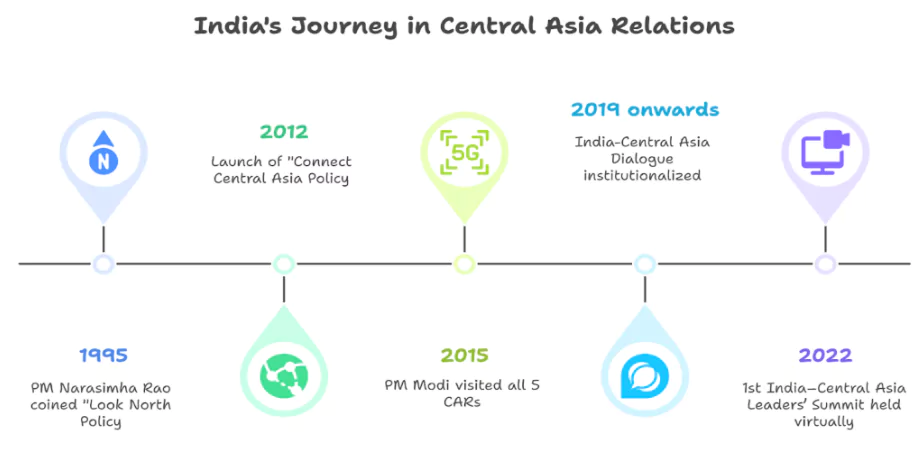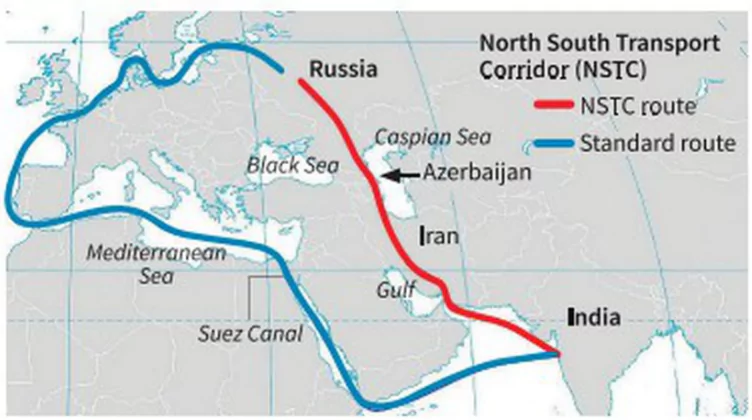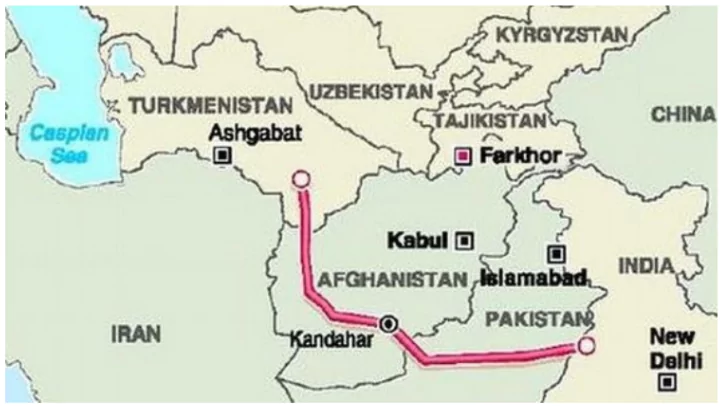External Affairs Minister S Jaishankar hosted the 4th India-Central Foreign Ministers dialogue, which took place after more than three-and-half years.
India–Central Asia Foreign Ministers’ Dialogue
- The India–Central Asia Dialogue is an annual multilateral meeting of the Foreign Ministers of India and the five Central Asian Republics (Kazakhstan, Kyrgyzstan, Tajikistan, Turkmenistan, and Uzbekistan).
- It serves as the main institutional framework for steering the strategic partnership.
| Timeline & Evolution |
| Edition |
Year |
Venue |
| 1st |
2019 |
Samarkand, Uzbekistan |
| 2nd |
2020 |
Virtual |
| 3rd |
2021 |
New Delhi |
| 4th |
2025 (Latest) |
New Delhi |
Major Outcomes of the 4th Dialogue
- Counter-Terrorism & Security: Strong condemnation of the Pahalgam terror attack (April 2025).
Comprehensive Convention on International Terrorism (CCIT):
- In 1996, India proposed the adoption of the Comprehensive Convention on International Terrorism (CCIT) to the United Nations General Assembly (UNGA).
- It is a proposed treaty which intends to criminalise all forms of international terrorism and deny terrorists, their financiers and supporters access to funds, arms, and safe havens.
- It is yet to be adopted by the UNGA.
|
-
- Call for the UN Comprehensive Convention on International Terrorism (CCIT).
- Regular NSA-level meetings (Next in Kyrgyz Republic).
- Trade & Economic Cooperation: Focus on boosting trade in pharma, IT, agriculture, energy, textiles.
- Push for trade in national currencies and digital payment systems.
- Joint Working Group (JWG) proposed for banking/financial ties.
- Connectivity Projects:
- INSTC Expansion: India backed Turkmenistan & Uzbekistan’s membership.
- Kazakhstan developing the eastern INSTC branch.
- Chabahar Port: Central Asia to use it for trade via Shahid Beheshti Terminal.
- Digital & Energy Partnerships: India Stack for Central Asia’s digital transformation.
- India-Central Asia Digital Forum (1st meet in Uzbekistan).
- Critical Minerals: 2nd Rare Earth Forum planned; joint exploration.
- Climate & Sustainability: Support for International Year of Glaciers’ Preservation (2025).
- Backing Kazakhstan’s UN SDG Hub in Almaty.
 Multilateral Engagement: Central Asia endorsed India’s UNSC permanent seat bid.
Multilateral Engagement: Central Asia endorsed India’s UNSC permanent seat bid.-
- SCO collaboration praised (India hosted 2023 Summit).
- India invited Central Asian nations to join the International Solar Alliance (ISA), Global Biofuels Alliance (GBA), Coalition for Disaster Resilient Infrastructure (CDRI) and International Big Cat Alliance (IBCA).
- Cultural & Youth Ties: Tajikistan to host 2nd Culture Ministers’ meeting.
- Focus on student exchanges & welfare.
- Afghanistan: Supported a peaceful, terrorism-free Afghanistan. Praised Uzbekistan’s Termez hub for UNHCR aid delivery.
- Future Steps: 2nd India-Central Asia Summit in 2025.
About India–Central Asia Summit
- The India–Central Asia Summit is a leader-level summit involving the Prime Minister of India and Presidents of the five Central Asian Republics (CARs).
- It is a political-strategic upgrade of the Foreign Ministers’ Dialogue and reflects a deepening of India’s engagement with the region.
- The 1st India–Central Asia Summit was hosted virtually by PM Narendra Modi in 2022.
|
What is Central Asia?
- Central Asia is a landlocked region in the heart of the Eurasian continent, traditionally comprising five post-Soviet republics:
| Country |
Capital |
Notable Features |
| Kazakhstan |
Astana (Nur-Sultan) |
Largest land area, rich in uranium and oil |
| Kyrgyzstan |
Bishkek |
Mountainous, Issyk-Kul Lake |
| Tajikistan |
Dushanbe |
High mountains, major river systems |
| Turkmenistan |
Ashgabat |
Major gas reserves, Karakum Desert |
| Uzbekistan |
Tashkent |
Most populous, historical cities like Samarkand and Bukhara |
Geographical Characteristics
- Borders: Surrounded by Russia (north), China (east), Iran and Afghanistan (south), and the Caspian Sea (west).
- Terrain: Includes vast steppes, deserts (e.g., Kyzylkum, Karakum), and high mountain ranges (e.g., Tien Shan, Pamirs).
- Water Systems: Home to the Amu Darya and Syr Darya rivers, once feeding the now-depleted Aral Sea.

About International North-South Trade Corridor (INSTC)

- The INSTC was initiated in 2000 by Russia, India and Iran, is a multi-modal transportation route linking the Indian Ocean and the Persian Gulf to the Caspian Sea via Iran, and onward to northern Europe via St Petersburg in Russia.
- INSTC consists of sea routes, rail links, and road connections that connect Mumbai in India to Saint Petersburg in Russia, passing through Chabahar.
- Member Countries: It has been ratified by 13 countries namely, Azerbaijan, Belarus, Bulgaria, Armenia, India, Iran, Kazakhstan, Kyrgyzstan, Oman, Russia, Tajikistan, Turkey, and Ukraine.
- The corridor has several branches:
- On the western side of the Caspian Sea, it would link Russia to Iran through Azerbaijan.
- The eastern branch runs along the eastern coast of the Caspian Sea and links the main corridor to different road and rail networks of Central Asian countries such as Turkmenistan and Kazakhstan.
|
Significance of Central Asia
- Geostrategic Significance: Strategic location at the heart of Eurasia — Central Asia acts as a land bridge between Europe and Asia.
- Critical for India’s Extended Neighbourhood Policy and regional influence amid China’s BRI and Russia’s presence.
- Energy Security: Rich in natural gas (Turkmenistan), uranium (Kazakhstan), and rare earths (Uzbekistan).
- Supports India’s diversification via TAPI pipeline and long-term energy cooperation.
- Connectivity & Transit: Central to INSTC and Chabahar Port access to bypass Pakistan.
- India supports Turkmenistan and Uzbekistan’s membership in INSTC.
- Security & Stability Partner: Shared goals in counterterrorism, anti-extremism, and drug trafficking control.
- Frequent NSA-level consultations and joint military exercises (e.g., DUSTLIK, KAZIND).
- Technology & Digital Diplomacy: India exporting Digital Public Infrastructure (DPI) and India Stack tools.
- Launch of India-Central Asia Digital Partnership Forum (2025).
- Multilateral Support & Global South Coordination
- Strong backing for India’s permanent UNSC membership.
- CARs joining India-led platforms like ISA, GBA, IBCA, CDRI; engaged in DAKSHIN for South–South cooperation.
- Soft Power and Diaspora: Bollywood, Indian cuisine, and culture are hugely popular in Central Asia.
- Indian diaspora in CARs contributes to business and cultural integration.
- Yoga, traditional medicine, and classical dance form the core of India’s soft power push.
Key Bilateral Highlights
India–Kazakhstan
- Strategic Partnership since 2009.
- Nuclear Energy: Major supplier of uranium to India (Kazatomprom–NPCIL agreements).
- Defence:
- Annual joint military exercise: KAZIND.
- Kazakhstan participates in UN peacekeeping drills with India.
- Connectivity: Kazakhstan advancing eastern corridor of the INSTC; active in the Ashgabat Agreement.
- Trade & Economy:
- Bilateral trade in 2023–24: approx. USD 1.1 billion.
- Indian exports: pharmaceuticals, tea, machinery.
- Indian investments in oilfield services, IT, and infrastructure.
India–Uzbekistan
- Strategic Partnership since 2011.
- Defence: Exercise DUSTLIK (2024 edition held at Uttarakhand).
- Active defence cooperation via joint working groups.
- Education & Culture: Indian universities: Amity, Sharda, Acharya in Andijan and Tashkent.
- ICCR Chairs, Hindi language, and yoga classes popular.
- Trade & Economy:
- Bilateral trade (2023–24): approx. USD 470 million.
- India Exports: pharma, mechanical appliances, chemicals.
- Strong push for investment in textiles, agri-processing, renewable energy, and ICT.
- Uzbekistan interested in joining INSTC; hosted 1st India–Central Asia Digital Forum in 2025.
India–Turkmenistan
- Energy Focused: Origin of the TAPI gas pipeline (delayed due to Afghanistan).
- Political Engagement:
- President Kovind visited Ashgabat in 2022.
- Cultural diplomacy: Inauguration of India Room and Tagore statue.
- Connectivity: Joined INSTC in 2023; India supporting its integration fully.
- Trade & Economy:
- Bilateral trade (2023–24): approx. USD 132 million.
- India’s exports: pharmaceuticals, electronics, textiles, tea.
- India exploring maritime connectivity via Chabahar for Turkmenistan’s cargo.
India–Tajikistan
- Geostrategic Value: Borders Afghanistan; closest CAR to India.
- Defence & Development: India operates India–Tajik Friendship Hospital, assists in hydropower.
- Indian firms active in power transmission (e.g., BHEL, Kalpataru).
- Trade & Economy:
- Bilateral trade remains modest (~USD 65 million).
- Tajikistan exports dry fruits, aluminum; India exports pharma, machinery.
- India providing technical assistance in rural health, education, and disaster response.
India–Kyrgyzstan
- Launchpad of India’s Connect Central Asia Policy (2012).
- Education: Several Indian students in medical universities; ITEC scholarships.
- Security Cooperation: Kyrgyzstan to host 3rd India–Central Asia NSA consultation.
- Trade & Economy:
- Trade (2023–24): approx. USD 47 million.
- India exports: pharma, chemicals, tea, cosmetics.
- India is investing in dairy, IT services, energy transmission.
About TAPI Pipeline Project

- Turkmenistan-Afghanistan-Pakistan-India (TAPI) pipeline is a major natural gas pipeline project that aims to transport natural gas from Turkmenistan to Afghanistan, Pakistan, and India.
- Route: The TAPI pipeline originates from the Galkynysh gas field in Turkmenistan, one of the world’s largest gas reserves.
- It then passes through Afghanistan, Pakistan, and ends at Fazilka in northwestern India.
- Financing: Funded by the Asian Development Bank (ADB)
- Turkmenistan took a loan of $700m from the Islamic Development Bank
- Remaining three countries made an initial investment of $200m in the TAPI project.
- Significance for India: According to BP Energy Outlook 2035, India will account for 9% of world energy consumption, while its share in global production will remain at 5%.
|
Key India–Central Asia Initiatives
- Connectivity & Trade Corridors
- International North-South Transport Corridor (INSTC): India supports Uzbekistan and Turkmenistan joining INSTC.
- Kazakhstan developing the eastern branch to enhance trade flow.
- Chabahar Port Integration: First India–Central Asia Joint Working Group on Chabahar met in Mumbai (April 2023).
- Promotion of TIR Carnet system to ease cargo movement.
- Ashgabat Agreement: India and all 5 CARs are parties; promotes multi-modal transport networks.
- Digital Public Infrastructure (DPI) Collaboration: Central Asia to adopt India Stack tools (e.g., Aadhaar-like ID, UPI systems).
- Launch of India–Central Asia Digital Partnership Forum.
- Uzbekistan to host the inaugural meeting.
- Science, Innovation & Rare Earths: Cooperation in space, innovation, and digital technologies.
- India–Central Asia Rare Earth Forum:
- First meeting in New Delhi (Sept 2024).
- 2nd forum planned to expand on critical mineral partnerships.
- Capacity Building & ITEC Expansion: Indian Technical and Economic Cooperation (ITEC) programme scaled up:
- Areas: IT, English language, governance training.
- Programmes on drug law enforcement, countering terror financing held in 2024–25.
- DAKSHIN (Global South Centre of Excellence): New platform for development knowledge exchange with Central Asia.
- Security & Counterterrorism: NSA-level consultations institutionalized:
- Next round to be hosted by Kyrgyz Republic.
- Environment & Sustainable Development: Participation in:
- Glacier Preservation Conference (Tajikistan, 2025).
- Five-Year Action Plan on Mountain Development (2023–27).
- UN SDG Hub launched by Kazakhstan in Almaty.
Challenges in India–Central Asia Relations
- Lack of Direct Physical Connectivity: No land border between India and any Central Asian country.
- Pakistan blocks overland access to Central Asia.
- Projects like INSTC and Chabahar Port are still in partial or slow implementation phase.
- Air connectivity remains limited, expensive, and largely indirect.
- Low Bilateral Trade Volumes: Combined trade with all five CARs is under USD 2 billion, which is very low compared to potential and compared to China’s trade (over USD 50 billion).
- High logistical costs, tariff barriers, and lack of banking/payment infrastructure inhibit trade growth.
- Absence of Free Trade Agreements and complementary product portfolios further limits expansion.
- China’s Strategic Dominance: China is the top trading partner and infrastructure investor in all CARs through the Belt and Road Initiative (BRI).
- Chinese projects like CPEC, railroads, and energy pipelines are far more entrenched.
- India’s approach is seen as slow-moving and policy-heavy, lacking Beijing’s aggressive financing and turnkey execution.
- Security Instability in the Region: Terrorism spillover from Afghanistan threatens regional stability.
- Drugs, arms smuggling, and radicalization are persistent threats.
- India lacks direct border proximity and hence cannot play a hard-security role like Russia or China.
- Example: TAPI pipeline is stalled due to insecurity in Afghanistan.
- Bureaucratic and Political Hurdles: CARs have authoritarian regimes, with opaque regulatory frameworks.
- Indian companies face challenges in setting up business, obtaining licenses, or navigating non-transparent procurement systems.
- Language and legal barriers also affect smoother bilateral engagement.
- Limited People-to-People Contact: Despite civilizational ties, cultural diplomacy remains underleveraged.
- Tourism, student exchanges, and academic cooperation are far below potential.
- Financial and Banking Disconnect: No direct banking or financial settlement system exists between India and CARs.
- Difficulty in trade finance, remittances, and currency convertibility.
- Proposal for Joint Working Group on Financial Connectivity (2025) is still in exploratory stages.
- Underutilization of Multilateral Platforms: Though India and CARs are part of SCO, CDRI, ISA, IBCA, synergy and actionable projects are still in the planning phase.
-
- India’s capacity to deliver large-scale infrastructure or regional connectivity projects is limited by lack of institutional follow-through and bureaucratic delay.
Way Forward for India–Central Asia Relations
- Fast-track Connectivity Projects: Accelerate full operationalization of INSTC and Chabahar Port.
- Prioritize multimodal corridors, customs digitization, and TIR Carnet expansion.
- Support Turkmenistan and Uzbekistan’s INSTC membership through trilateral and multilateral diplomacy.
- Secure Long-Term Energy & Critical Mineral Agreements: Fast-track TAPI pipeline negotiations post-Afghan stabilization.
- Finalize joint exploration and processing of rare earths under the India–Central Asia Rare Earth Forum.
- Ensure reliable long-term uranium supply agreements with Kazakhstan.
- Build Robust Financial and Trade Infrastructure: Establish the India–Central Asia Joint Working Group on Financial Connectivity.
- Promote rupee settlement, digital payments, and interbank linkages to ease trade flows.
- Push for B2B facilitation via ICABC and joint chambers of commerce.
- Export India Stack and Digital Governance Models: Roll out Digital Public Infrastructure (DPI) pilot programs in willing CARs.
- Position India as a tech partner of choice over Chinese infrastructure-based digital authoritarianism.
- Use the India–Central Asia Digital Partnership Forum as a multilateral tech platform.
- Expand Human Capital and Skill Development Cooperation: Scale up ITEC scholarships, vocational training, and medical fellowships.
- Support Indian university campuses in Kyrgyzstan, Tajikistan, and Turkmenistan.
- Introduce new joint R&D initiatives in AI, biotech, agri-tech.
- Enhance Security Cooperation and Counterterrorism Dialogue: Institutionalize NSA-level consultations and intelligence sharing.
- Joint training for drug law enforcement, cybersecurity, and deradicalization strategies.
- Use SCO and bilateral formats to monitor Afghan spillover threats.
- Deepen Cultural and Civilizational Diplomacy: Strengthen Indian Cultural Centres, Sanskrit chairs, and youth exchanges.
- Organize India–Central Asia Culture Ministers’ Meet regularly (next in Tajikistan).
- Leverage shared Sufi, Buddhist, and Mughal heritage for people-to-people bridges.
Conclusion
The 4th India-Central Asia Dialogue, marked by the Pahalgam attack condemnation and a 3.5-year gap, reinforces India’s strategic engagement with CARs through connectivity, trade, and security initiatives. Sustained efforts in INSTC, Chabahar, and soft power will counter regional challenges and elevate India’s influence.
![]() 7 Jun 2025
7 Jun 2025

 Multilateral Engagement: Central Asia endorsed India’s UNSC permanent seat bid.
Multilateral Engagement: Central Asia endorsed India’s UNSC permanent seat bid.
